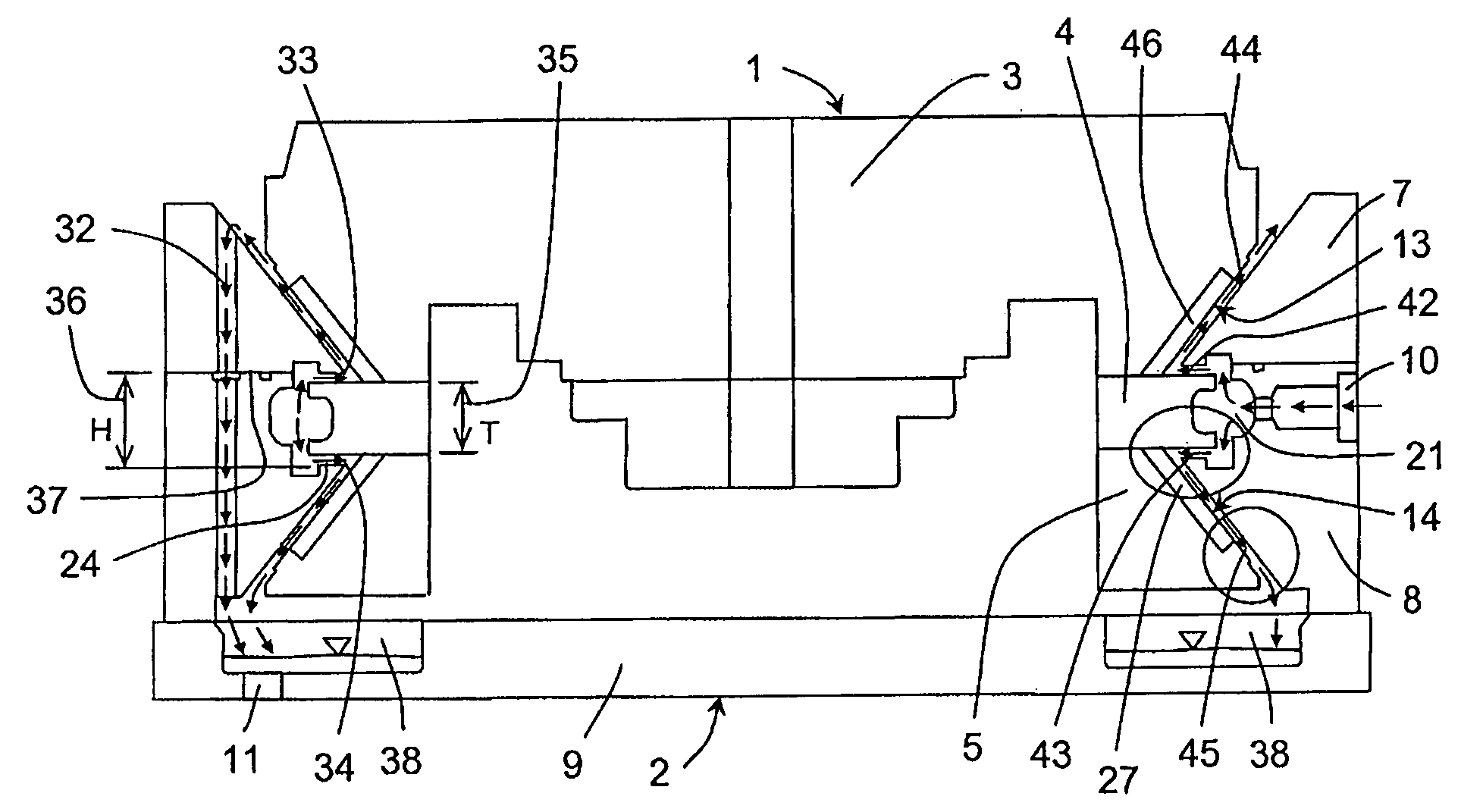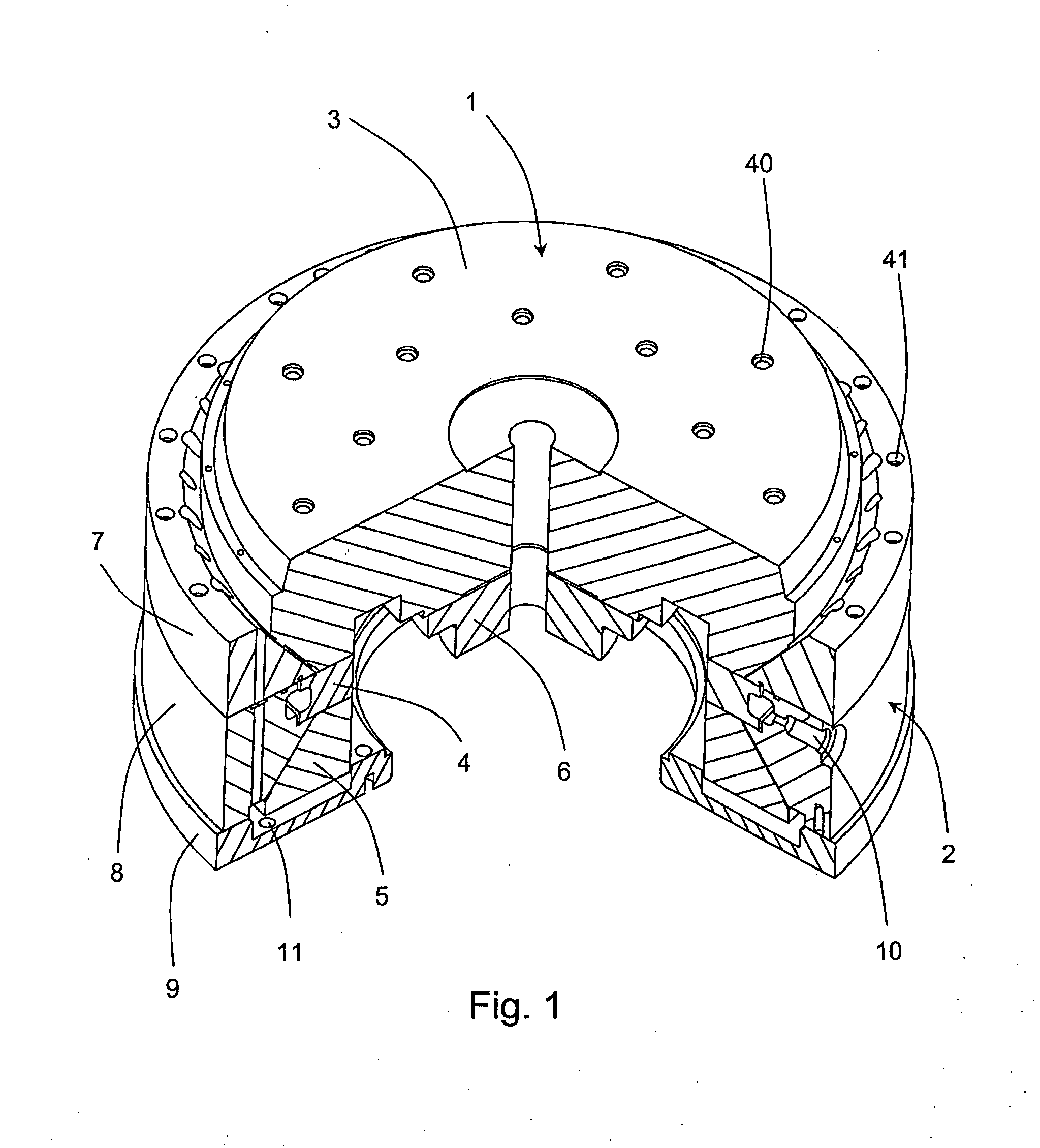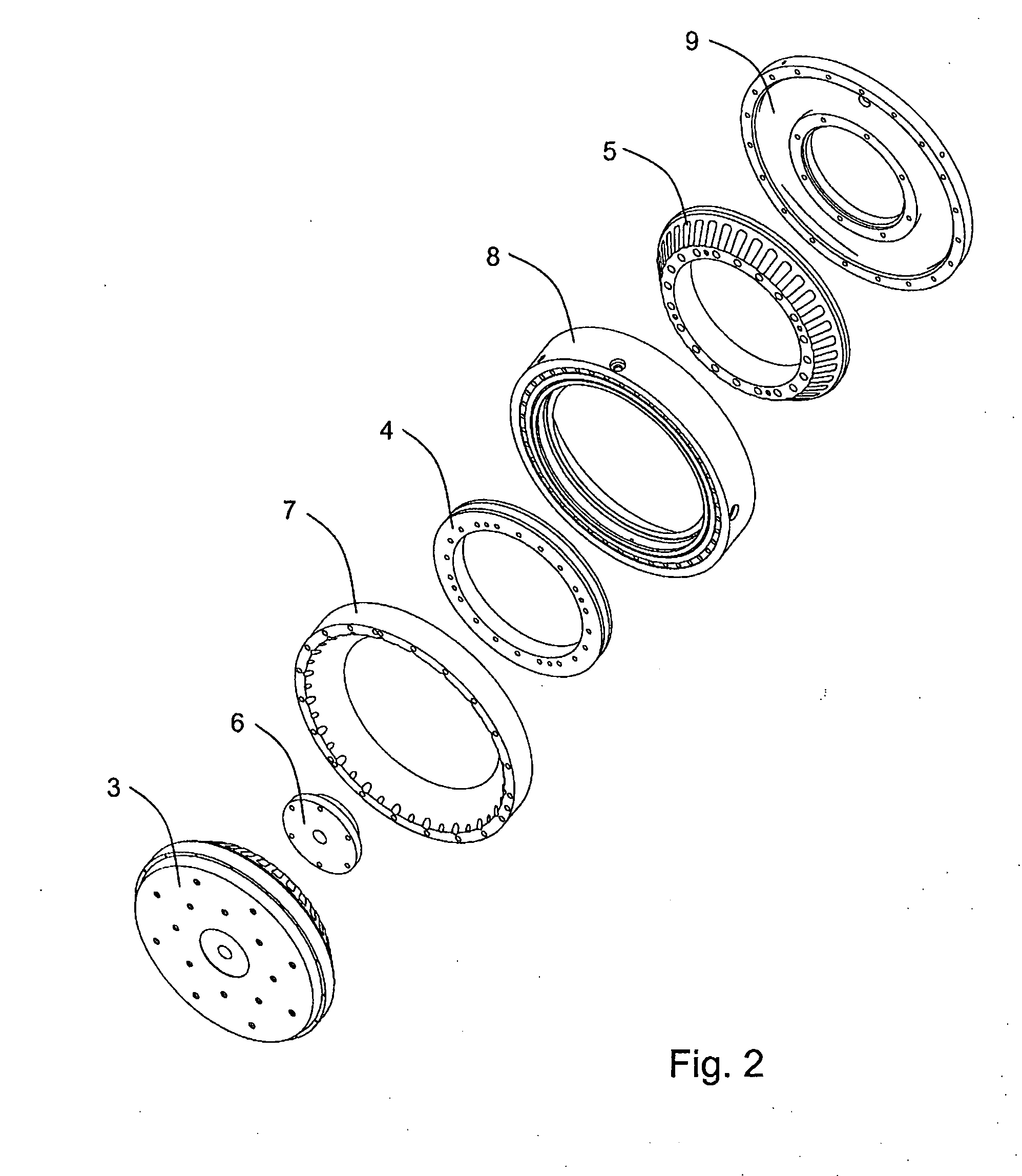Compact surface self-compensated hydrostatic bearings
a self-compensation, bearing technology, applied in the direction of bearings, linear bearings, shafts and bearings, etc., can solve the problems of increasing cost, time-consuming and labor-intensive to adjust all the restrictors, and adding complexity and cost to designs
- Summary
- Abstract
- Description
- Claims
- Application Information
AI Technical Summary
Benefits of technology
Problems solved by technology
Method used
Image
Examples
Embodiment Construction
[0028]The present invention relates to a rotary hydrostatic bearing system for use in precision machine tools, having, in combination, a rotor assembly, a stator assembly attached to a machine bed, a fluid pressure source and distribution system to supply pressurized fluid to keep the rotor assembly from making physical contact with the stator assembly.
[0029]In the present invention, flow restriction, or compensation, between the pressure supply and the load supporting surfaces is provided by a geometry that is an integral part of the system formed onto components that make up the assembly. In particular, the geometry is especially well suited for use in spindles and rotary tables, but it can also be used for linear motion systems. The invention establishes the relative position of a rotor assembly to a stator assembly with the use of a novel arrangement of precision surfaces, which result in a highly rigid and stable hydrostatic bearing, particularly in axial and tilt modes of load...
PUM
 Login to View More
Login to View More Abstract
Description
Claims
Application Information
 Login to View More
Login to View More - R&D
- Intellectual Property
- Life Sciences
- Materials
- Tech Scout
- Unparalleled Data Quality
- Higher Quality Content
- 60% Fewer Hallucinations
Browse by: Latest US Patents, China's latest patents, Technical Efficacy Thesaurus, Application Domain, Technology Topic, Popular Technical Reports.
© 2025 PatSnap. All rights reserved.Legal|Privacy policy|Modern Slavery Act Transparency Statement|Sitemap|About US| Contact US: help@patsnap.com



